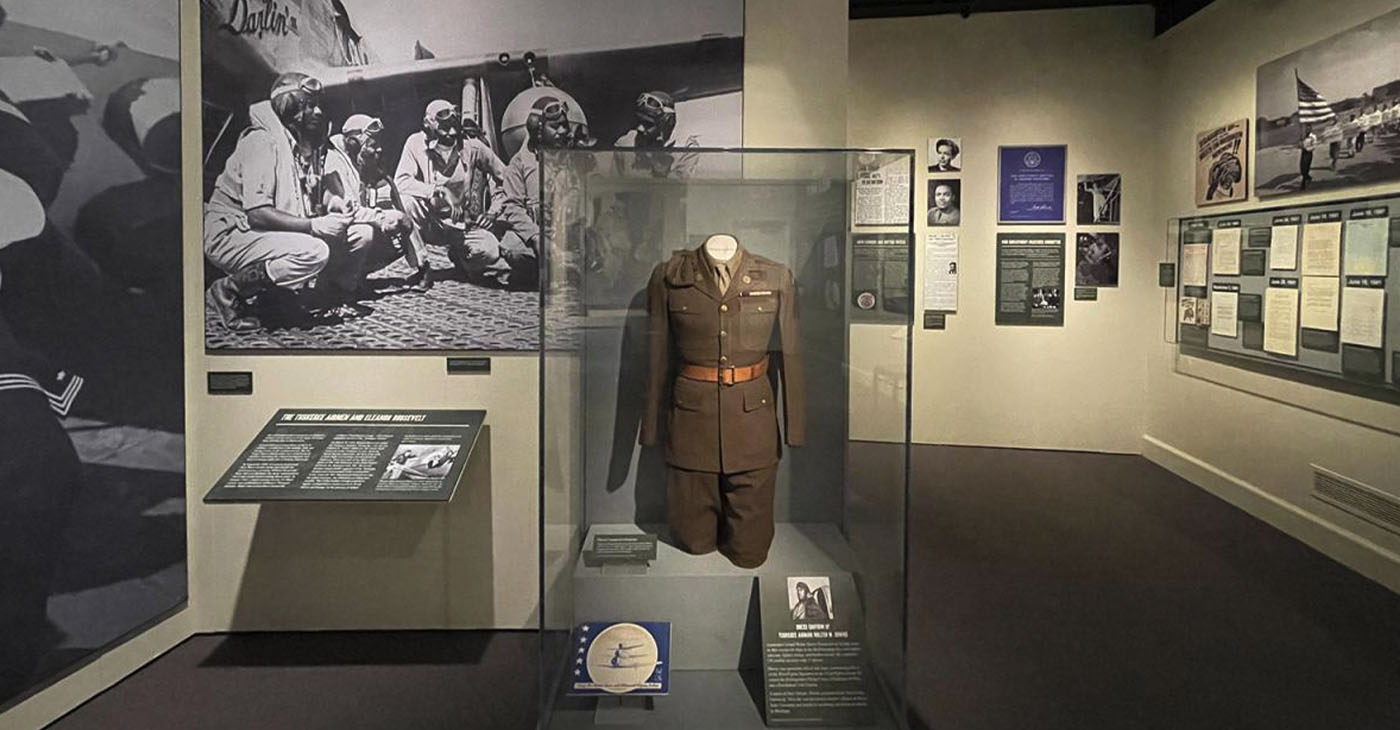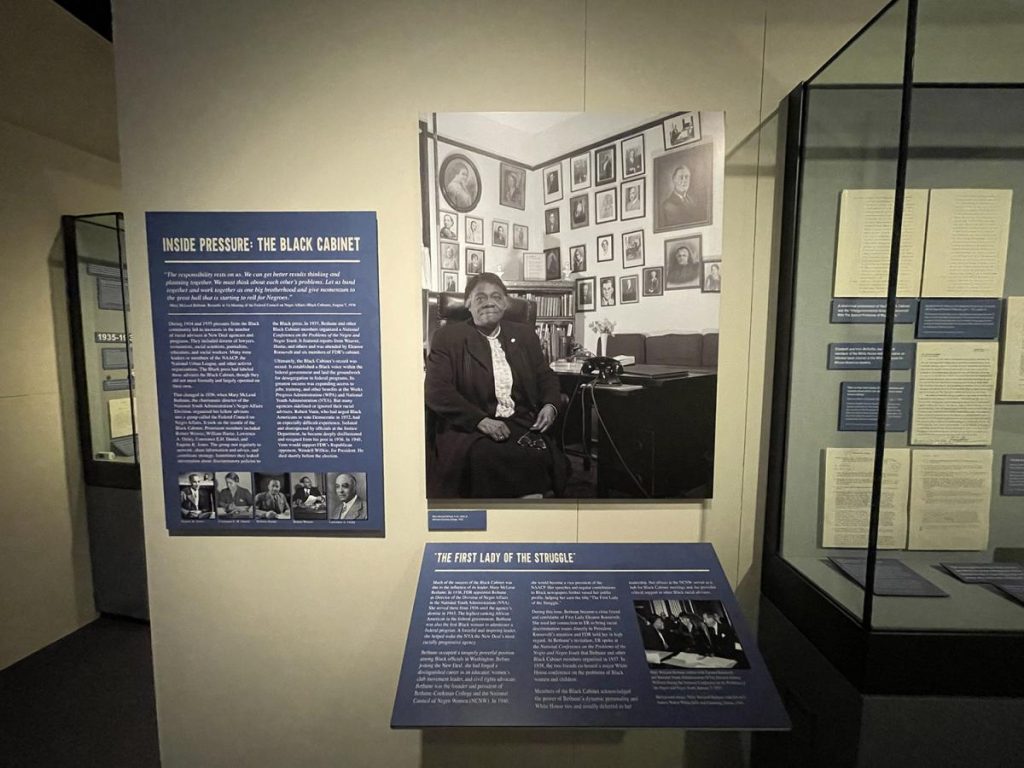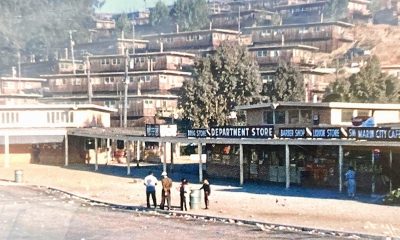Black History
Civil Rights Exhibit Opens at Franklin D. Roosevelt Library and Museum in New York
Hyde Park, NY — The opening of the Franklin D. Roosevelt Library and Museum’s feature exhibit, “Black Americans, Civil Rights, and the Roosevelts, 1932–1962,” allows the library to share its extensive collection relating to Black American history. By highlighting these critical primary sources, the library’s team aims to inspire a deeper understanding of Black American experiences and a critical evaluation of the period.

By Kristin Phillips
National Archives News
Hyde Park, NY — The opening of the Franklin D. Roosevelt Library and Museum’s feature exhibit, “Black Americans, Civil Rights, and the Roosevelts, 1932–1962,” allows the library to share its extensive collection relating to Black American history. By highlighting these critical primary sources, the library’s team aims to inspire a deeper understanding of Black American experiences and a critical evaluation of the period.
The exhibition showcases archival documents from across the library’s collections. It centers the historical voices of many Black community leaders, wartime service members, and other citizens who directly engaged the Roosevelt administration and pushed for progress.
“This exhibit looks critically at how Black Americans fared under the New Deal and throughout the Roosevelt administration, and how the Roosevelts worked with prominent Black American leaders and advanced the causes of civil rights,” said Supervisory Curator Herman Eberhardt.
The story emerges as one of Black Americans organizing and expanding national networks of political allies to create new opportunities for social justice and to find ways to combat Jim Crow segregation, widespread discrimination, and the harsh and often violent realities of racism in America.
From the Great Depression and New Deal through World War II and the postwar Civil Rights movement, “Black Americans, Civil Rights, and the Roosevelts” offers critical perspectives on, and candid assessments of, the administration’s policies and practices and of the Roosevelts themselves.

Records relating to educator, activist, writer, Presidential adviser, and the first Black woman to head a federal agency, Mary McLeod Bethune, on display in the new exhibit. Photo courtesy Clifford Laube.
“The FDR Library may not come to mind as a destination for studying Black history, but in fact there is tremendous documentation of Black perspectives, and evidence of government interactions with Black communities, preserved and made available here,” said Supervisory Archivist Kirsten Carter.
“There are countless and very moving testimonies of Black American experiences woven deeply throughout the archives. With this exhibition, the library has an opportunity to share and celebrate these primary sources, and hopefully to inspire new, original research.
The exhibit was developed over three years, in collaboration with a committee of distinguished scholars chaired by David Levering Lewis, a Pulitzer Prize–winning American historian and professor at New York University. It draws from archival collections at the Roosevelt Library and beyond.
The Tuskegee Airmen National Historical Museum loaned a complete uniform. Many political campaign and protest materials like buttons, fliers, signs, and newspapers came from private collections nationwide.
Many documents and artifacts in the exhibit are on display for the first time. One example is a letter from Mary McLeod Bethune, educator, activist, writer, Presidential adviser, and the first Black woman to head a federal agency. Her letter to FDR in June 1938 encouraged him to support a bill to increase federal funding for Black American education in the South. These materials provide evidence of the unrelenting efforts of many key figures of the early civil rights movement, such as Bethune.
Exhibits also document the racism and discrimination in American politics as well as the culture of the era, highlighting the contradictions inherent in fighting for democracy abroad while injustice persisted at home.
“Our hope is that this exhibition will spark civil dialogue and engagement, leading to an inspired change in our nation,” said Roosevelt Library Director William Harris. “We’ve seen examples of this throughout history with our nation’s courage to overcome the Great Depression and how the world joined together to overcome fascism during World War II.”
Black Americans, Civil Rights, and the Roosevelts, 1932–1962, is on display through December 31, 2024. For more information, visit the library and museum’s website. The Franklin D. Roosevelt Library and Museum is on the eastern shore of the Hudson River, four miles north of Poughkeepsie, New York, midway between New York City and Albany. The library is easily reached by car, train, or plane.
Activism
Oakland Post: Week of April 24 – 30, 2024
The printed Weekly Edition of the Oakland Post: Week of April 24 – 30, 2024

To enlarge your view of this issue, use the slider, magnifying glass icon or full page icon in the lower right corner of the browser window. ![]()
Activism
Oakland Post: Week of April 17 – 23, 2024
The printed Weekly Edition of the Oakland Post: Week of April 17 – 23, 2024

To enlarge your view of this issue, use the slider, magnifying glass icon or full page icon in the lower right corner of the browser window. ![]()
Black History
Matthew Henson: Explorer Extraordinaire
Matthew Henson, a trailblazing explorer who overcame countless obstacles to leave an incredible mark on history. Born on August 8, 1866, in Charles County, Maryland, his journey is a testament to the power of determination and the spirit of adventure.

By Tamara Shiloh
Matthew Henson, a trailblazing explorer who overcame countless obstacles to leave an incredible mark on history. Born on August 8, 1866, in Charles County, Maryland, his journey is a testament to the power of determination and the spirit of adventure.
Henson’s life began amidst the backdrop of post-Civil War America, where opportunities for African Americans were scarce. From a young age, he possessed an insatiable curiosity about the world beyond his small town. At the age of 12, he embarked on a journey that would change the course of his life forever when he joined a merchant ship as a cabin boy.
His most famous expedition was his journey to the Arctic with renowned explorer Robert E. Peary. In 1887, Henson joined Peary’s crew as a seaman and quickly proved himself to be invaluable with his skills as a navigator and craftsman. Over the course of several expeditions, Matthew endured extreme cold, treacherous terrain, and grueling conditions as he and Peary sought to reach the elusive North Pole.
In 1908–09, Peary set out on his eighth attempt to reach the North Pole. It was a big expedition, with Peary planning to leave supplies along the way. When he and Henson boarded their ship, the Roosevelt, leaving Greenland on August 18, 1909, they were joined by a large group. This included 22 Inuit men, 17 Inuit women, 10 children, 246 dogs, 70 tons of whale meat, blubber from 50 walruses, hunting gear, and tons of coal.
In February, Henson and Peary left their anchored ship at Ellesmere Island’s Cape Sheridan, along with the Inuit men and 130 dogs. They worked together to set up a trail and supplies along the way to the Pole.
Peary picked Henson and four Inuit people to join him in the final push to the Pole. However, before they reached their destination, Peary couldn’t walk anymore and had to ride in a dog sled. He sent Henson ahead to scout the way. In a later interview with a newspaper, Henson recalled being in the lead and realizing they had gone too far. The group turned back, and Henson noticed his footprints helped guide them to their destination. At that location, Henson planted the American flag.
Henson’s legacy extends far beyond his expeditions to the Arctic. He shattered racial barriers in the world of exploration and inspired countless individuals, regardless of race, to dream big and pursue their passions. In 1937, he was finally recognized for his achievements when he was inducted into The Explorers Club, an organization dedicated to promoting scientific exploration and field research.
Matthew Henson died in the Bronx, New York, on March 9, 1955, at the age of 88.
-

 Activism4 weeks ago
Activism4 weeks agoOakland Post: Week of March 27 – April 2, 2024
-

 #NNPA BlackPress4 weeks ago
#NNPA BlackPress4 weeks agoBeloved Actor and Activist Louis Cameron Gossett Jr. Dies at 87
-

 Community1 week ago
Community1 week agoFinancial Assistance Bill for Descendants of Enslaved Persons to Help Them Purchase, Own, or Maintain a Home
-

 Activism3 weeks ago
Activism3 weeks agoOakland Post: Week of April 3 – 6, 2024
-

 Business1 week ago
Business1 week agoV.P. Kamala Harris: Americans With Criminal Records Will Soon Be Eligible for SBA Loans
-

 Activism2 weeks ago
Activism2 weeks agoOakland Post: Week of April 10 – 16, 2024
-

 Community1 week ago
Community1 week agoAG Bonta Says Oakland School Leaders Should Comply with State Laws to Avoid ‘Disparate Harm’ When Closing or Merging Schools
-

 Community6 days ago
Community6 days agoOakland WNBA Player to be Inducted Into Hall of Fame





















































